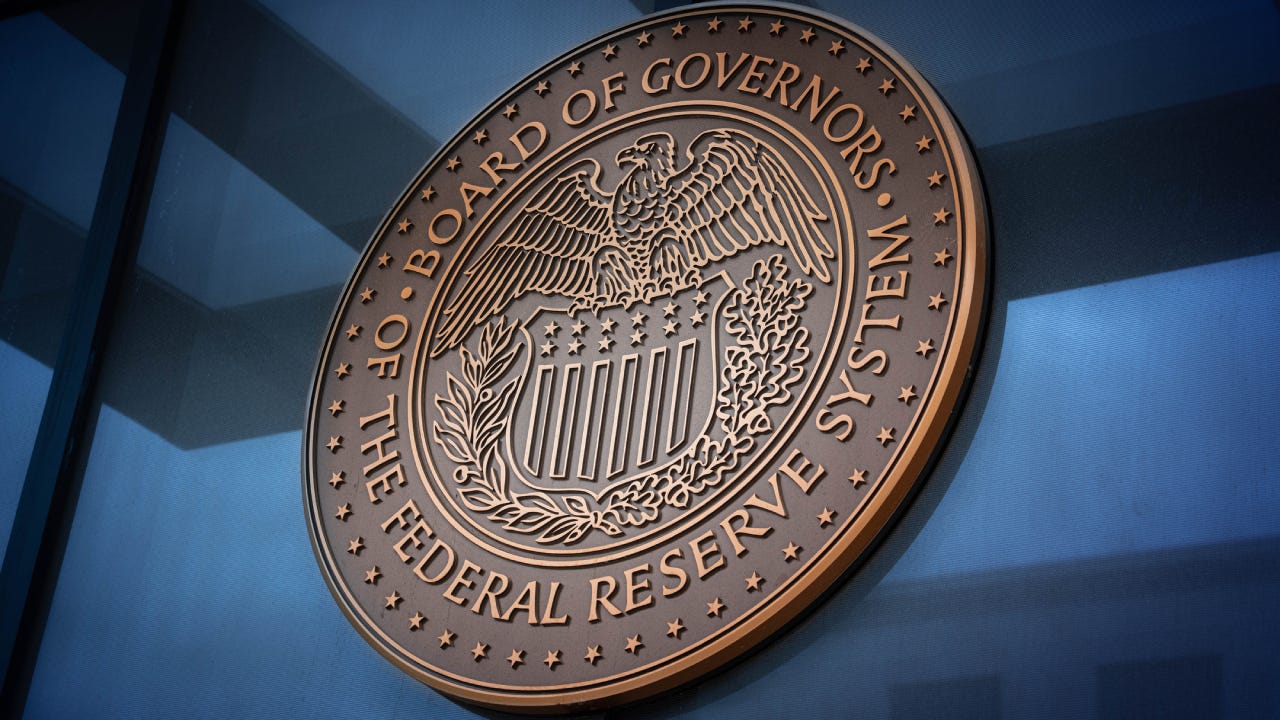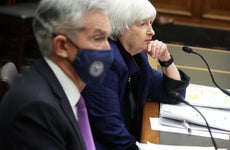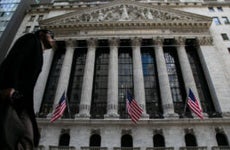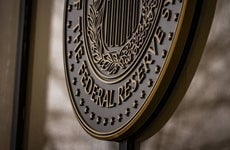Survey: Investment experts see 10-year Treasury yield falling over the next year

The Bankrate promise
At Bankrate we strive to help you make smarter financial decisions. While we adhere to strict , this post may contain references to products from our partners. Here's an explanation for .
Market pros surveyed by Bankrate expect Treasury yields to decline over the next 12 months as inflation continues to moderate and the market looks for potential interest rate cuts in 2024. Bankrate’s Fourth-Quarter Market Mavens survey found that investment experts expect the 10-year Treasury yield to fall to 3.98 percent a year from now, down from 4.24 percent at the end of the survey period on December 11, 2023.
Most of the survey’s respondents see rates lower a year from now, with forecasts ranging from 3.25 percent to 5.0 percent.
The survey period ended just before the Fed’s December meeting where it left rates unchanged and signaled that it is likely finished with interest rate hikes. The 10-year yield fell to 4.02 percent immediately following the announcement and traded below 4 percent in the days after.
“2024 brings with it no shortage of potentially challenging factors that will be associated with the nagging ‘wall of worry’ including whether interest rates and yields match hopes, geopolitical risk and, lest we forget, the U.S. election,” says Mark Hamrick, Bankrate’s senior economic analyst. “A recent Bankrate survey found that nearly 9 in 10 Americans said the handling of the economy will be a key decision-making factor in casting their ballot for president.”
Forecasts and analysis:
This article is one in a series discussing the results of Bankrate’s Fourth-Quarter 2023 Market Mavens Survey:
- Survey: Investment experts see 10-year Treasury yield falling over the next year
- Survey: Stocks to march 5.5% higher in 2024, say pros
- Survey: Here’s how experts see Fed policy hitting stocks in 2024
10-year yield expected to fall over the coming year, analysts say
The 10-year Treasury yield has spent nearly all of the past two decades below 5 percent, reaching record lows during the COVID-19 pandemic as the Fed sharply cut rates to support the economy. At its bottom, the 10-year yield hit about 0.50 percent in August 2020, but began to rise as the economy recovered. Rates rose steadily throughout 2022, as the Fed aggressively hiked rates to combat inflation.
Investment professionals surveyed by Bankrate expect the 10-year yield to be 3.98 percent at the end of 2024, down from the 4.36 percent level they expected it to reach at the end of September 2024, as indicated in the previous survey.
The survey’s estimates have generally tracked the overall path of interest rates, with forecasts ranging from 2.19 percent in the fourth quarter 2021 survey to 4.36 percent in the third quarter 2023 survey.
Analysts look ahead to possible rate cuts in 2024
With the Fed signaling that it is likely finished with interest rate hikes as inflation has come down, some market analysts are looking ahead to possible rate cuts in 2024.
Sameer Samana, senior global market strategist at Wells Fargo Investment Institute, expects a recession in the first half of 2024, causing the Fed to respond.
“We see just 2-3 rate cuts next year, in the second half, and that should help with both an economic and market recovery,” Samana says.
Sonu Varghese, global macro strategist at Carson Group, also sees interest rate cuts next year. “We expect the FOMC to cut rates 3-4 times in 2024, on the back of lower inflation but on-trend economic growth,” he says.
Briefing.com Chief Market Analyst Patrick O’Hare says it’s important to pay attention not just to whether rates will be cut next year, but the reason for those cuts.
“The best outcome would be cutting rates because inflation is coming down to target while the economy is still growing,” O’Hare says. “Cutting rates because the economy is in recession would be a different story for the stock market, because recessions are bad for earnings. Our current expectation is that the Fed will cut rates by 50 basis points in 2024.”
Methodology
Bankrate’s fourth-quarter 2023 survey of stock market professionals was conducted from Dec. 1-11 via an online poll. Survey requests were emailed to potential respondents nationwide, and responses were submitted voluntarily via a website. Responding were: Kenneth Chavis IV, CFP, senior wealth counselor, Versant Capital Management; Sameer Samana, senior global market strategist, Wells Fargo Investment Institute; Patrick J. O’Hare, chief market analyst, Briefing.com; Dec Mullarkey, managing director, SLC Management; Kenneth Tower, CEO, chief investment strategist, Quantitative Analysis Service; Clark A. Kendall, CFA, president, Kendall Capital; Sonu Varghese, Ph.D., global macro strategist, Carson Group; Michael K. Farr, president and CEO, Farr, Miller & Washington; Brad McMillan, chief investment officer, Commonwealth Financial Network; Sam Stovall, chief investment strategist, CFRA Research; Kim Forrest, chief investment officer/founder, Bokeh Capital Partners; Chuck Carlson, CFA, CEO, Horizon Investment Services.
Editorial Disclaimer: All investors are advised to conduct their own independent research into investment strategies before making an investment decision. In addition, investors are advised that past investment product performance is no guarantee of future price appreciation.
Related Articles

Survey: Experts forecast strong rise in Treasury yields over next year

Survey: Market pros see 10-year Treasury yield flat one year from now

Survey: Market pros see 10-year Treasury yield declining over the coming year

Survey: Experts see 10-year Treasury yield falling over the next year